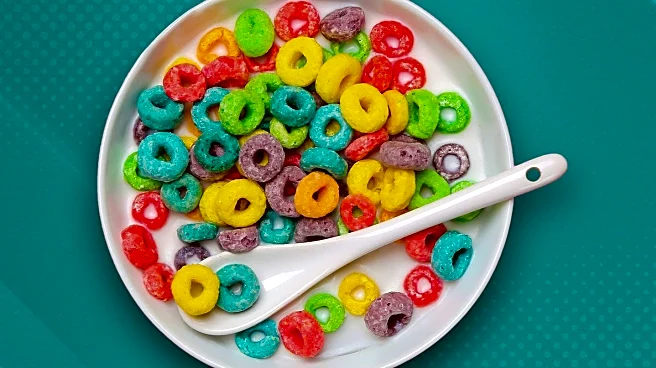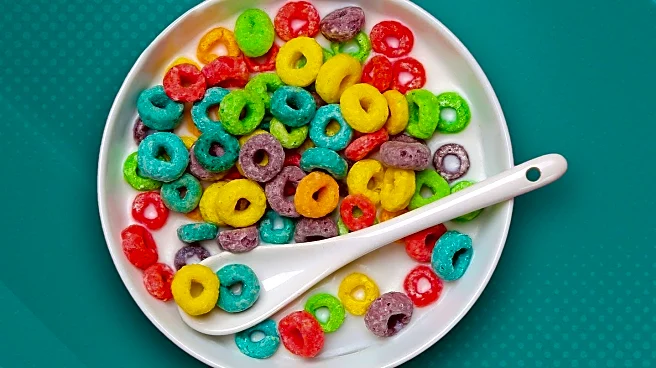What's Happening?
A recent study has revealed concerning trends in breakfast cereals marketed to children aged 5 to 12. The study, which examined cereals launched between 2010 and 2023, found that these products have become sweeter, saltier, and less nutritious over time. Specifically, the fat, sodium, and sugar content in these cereals has increased, while beneficial nutrients like protein and fiber have decreased. On average, a single serving of cereal contains nearly three teaspoons of sugar, which is about 45% of the maximum daily added sugar recommended by the American Heart Association for children. Despite these findings, Consumer Reports suggests that parents can still choose healthier cereal options by carefully examining ingredient lists and nutrition facts, prioritizing whole grains and lower sugar content.
Why It's Important?
The findings of this study are significant as they highlight the growing nutritional challenges in products targeted at children, which can impact their health and dietary habits. High sugar and sodium levels in breakfast cereals can contribute to health issues such as obesity, diabetes, and heart disease. By raising awareness, the study encourages parents to make informed choices, potentially leading to better health outcomes for children. It also underscores the need for food manufacturers to consider reformulating products to meet healthier standards, which could influence industry practices and public health policies.
What's Next?
Parents and caregivers are advised to be more vigilant when selecting breakfast cereals, opting for those with whole grains and lower sugar content. Additionally, the food industry may face increased pressure to reformulate products to align with healthier nutritional standards. This could lead to changes in marketing strategies and product offerings, as companies strive to meet consumer demand for healthier options. Advocacy groups and health organizations may also push for stricter regulations on food marketing to children.











